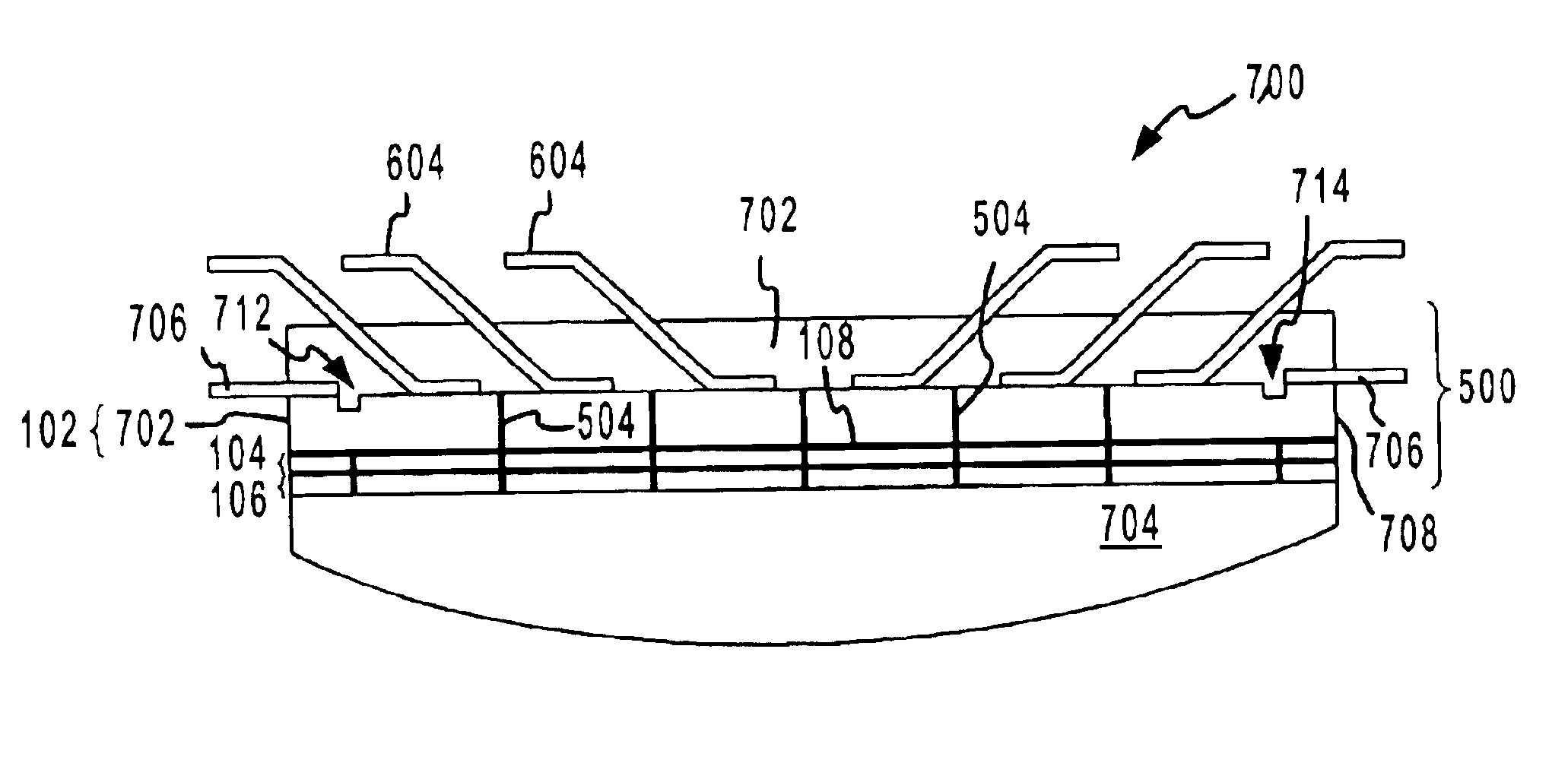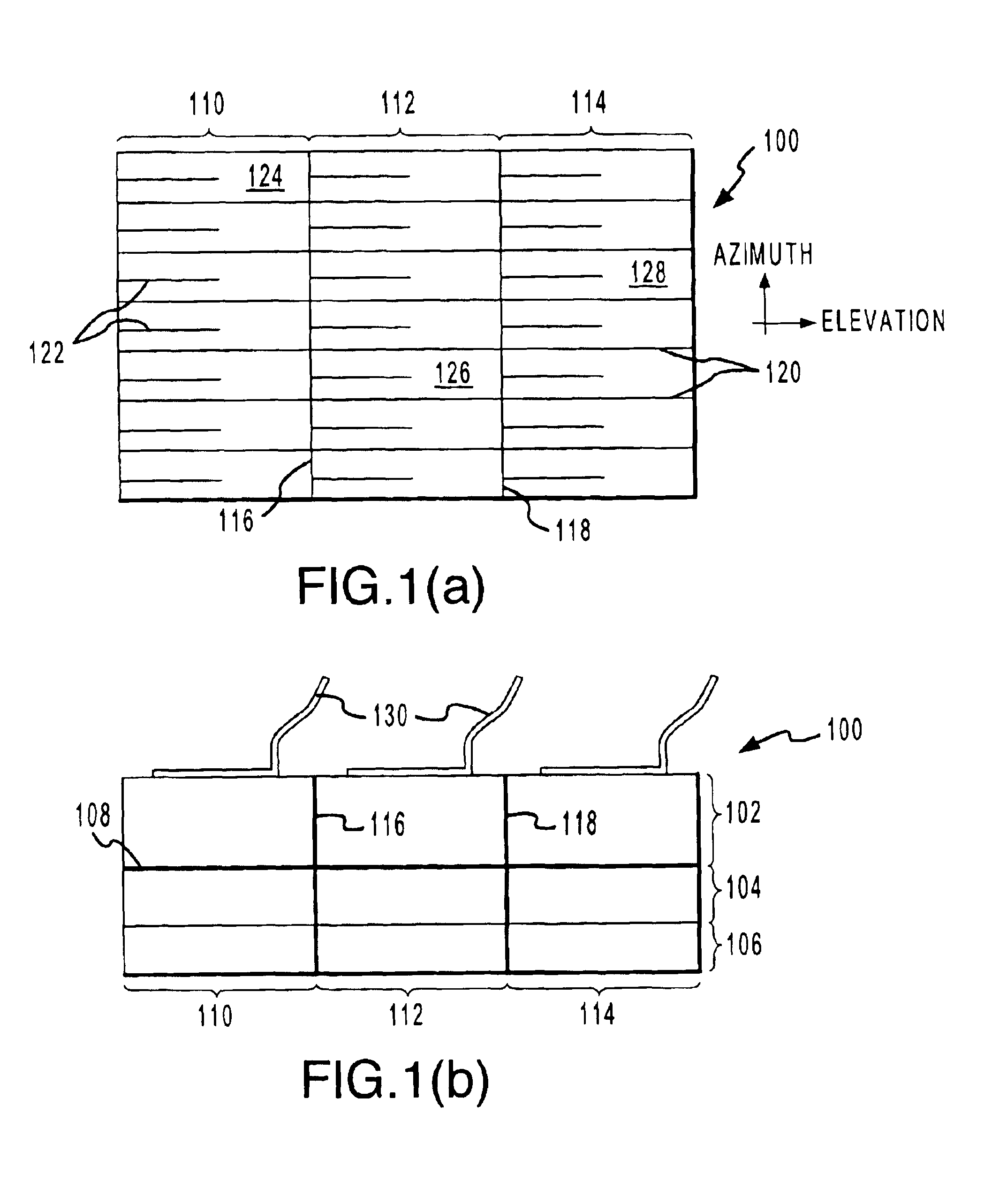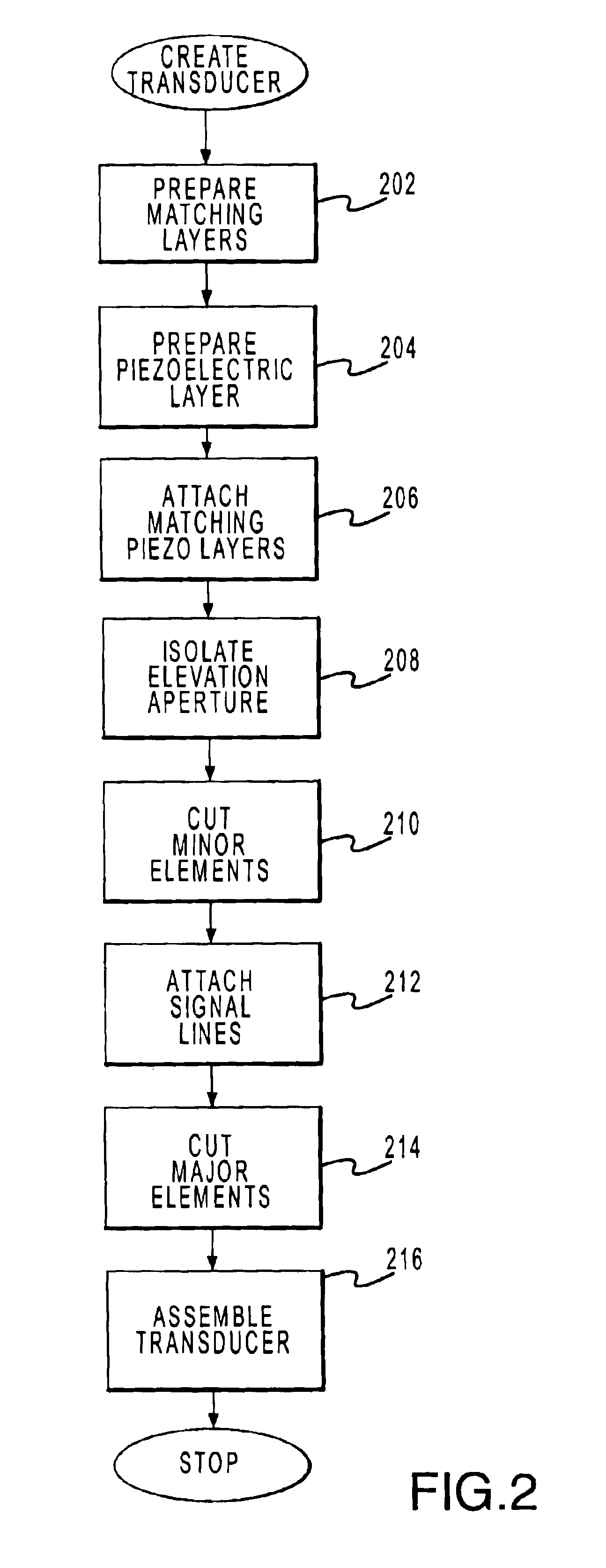Multidimensional array and fabrication thereof
a technology of multi-dimensional arrays and fabrication methods, applied in the field of multi-dimensional arrays, can solve the problems of difficult construction of transducer arrays with the required elevation properties, increased cost and complexity, and generally lower beam resolution
- Summary
- Abstract
- Description
- Claims
- Application Information
AI Technical Summary
Benefits of technology
Problems solved by technology
Method used
Image
Examples
Embodiment Construction
The exemplary embodiment of the invention disclosed herein primarily discusses the construction of a multi-dimensional array for use in a medical imaging transducer. However, any number of other embodiments fall within the ambit of the present invention. For example, the devices and techniques described herein could be used in conjunction with other types of transducer systems, such as audio loudspeakers, nondestructive evaluation, non-invasive surgeries, dentistry, and the like. Similarly, the techniques described herein in conjunction with 1.5-D arrays could also be used to implement a 2-D array, or any other multi-dimensional structure. Further, it will be appreciated that the alignment, spatial orientation, and relative positions of the various elements recited herein could be modified in any way without departing from the scope of the invention. For example, although the terms "azimuth" and "elevation" are used herein to simplify discussion, it would be possible to formulate tr...
PUM
| Property | Measurement | Unit |
|---|---|---|
| frequency | aaaaa | aaaaa |
| thickness | aaaaa | aaaaa |
| speed | aaaaa | aaaaa |
Abstract
Description
Claims
Application Information
 Login to View More
Login to View More - R&D
- Intellectual Property
- Life Sciences
- Materials
- Tech Scout
- Unparalleled Data Quality
- Higher Quality Content
- 60% Fewer Hallucinations
Browse by: Latest US Patents, China's latest patents, Technical Efficacy Thesaurus, Application Domain, Technology Topic, Popular Technical Reports.
© 2025 PatSnap. All rights reserved.Legal|Privacy policy|Modern Slavery Act Transparency Statement|Sitemap|About US| Contact US: help@patsnap.com



